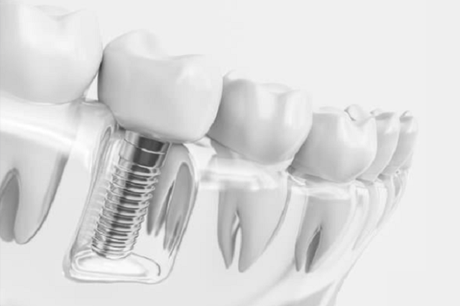
Once you've decided that dental implant surgery is the thing for you, the next thing you'll probably be asking yourself is how many implants you'll require. While this is a pretty broad question that'll have different answers for different patients, working out the number of implants that'll be necessary is nevertheless an important part of the process.
While there'll be many factors to consider, the answer to this question will ultimately come down to the number of teeth you're replacing. If you're only replacing the one tooth then the answer is obvious, but the procedure doesn't necessarily equate to a ratio of one implant per tooth.
Ahead, we'll take a deep dive into breaking down exactly how many dental implants you'll need, depending on how many lost or damaged teeth you'll need to replace. This is only a broad guide though, and your dentist will be able to walk you through definitively during your initial consultation with him or her.
If dental implants are something you've been either considering or have committed to and you'd like to know more, stick around until the end to find out the great benefits of getting your dental implant surgery in Turkey.
If You're Replacing 1 Tooth
If you're only replacing the one tooth then, as previously mentioned, you'll obviously only need the one implant. This one's pretty self-explanatory, but still worth mentioning.
If You're Replacing 2 Teeth
If you're replacing 2 teeth, then it may also be possible to do so with just the single implant. If the two teeth that need replacing are in different parts of the mouth then obviously two separate implants will be required. If however the missing teeth are beside one another, then it's possible to instead create a crown designed to look as if it were two teeth, and have it supported by one implant underneath one of the two. In cases such as these though it's important to consider the patient's bite, as if it's not done properly, it could result in undue pressure being placed upon the implant.
If You're Replacing 3 to 5 Teeth
Again, depending on where exactly the missing teeth are located, it may just be necessary to have each tooth with its own implant. In most cases though, and again, as was the case when replacing 2 teeth, if the missing teeth are beside one another then it won't be necessary for each to have its own individual implant. If replacing three teeth for example, then a crown made to look like 3 teeth can be made with implants placed to support the outer two teeth, with the middle suspended between the two.
If You're Replacing More than 5 Teeth
If it's more than 5 teeth that need replacing then things can start to become a little more complex. You'll need to take a number of factors into consideration, including your needs as a patient, the amount of bone you have available to fit the implants, the location and angle of the surrounding natural teeth, how well you'll be able to clean the new implanted teeth, and how much it'll cost overall. Typically speaking in situations such as these, an implant at either end of the row of missing teeth with one or two more in between will support the crown that's been designed to look like however many teeth are missing.
What if You Have no Teeth at All?
While each procedure will be unique to the patient, along with the dentist and his or her own opinions, in general it's possible to do a full restoration with as few as 4 implants over both top and bottom arches.
There are a few different implant configurations available for a permanently fixed dental implant bridge, ranging from 2 on top and 2 on bottom, 4 on top and 4 on bottom, 6 on top and 4 on bottom, or 6 on top and 6 on bottom. 4 on 4 is the most typical configuration-the procedure is often referred to as "all on 4 (or all on 6) dental implants"- and the bridge will only be able to be removed for cleaning and maintenance by your dentist. Implants in this example are usually placed under the canines and premolars.
Removable dentures are another option with dental implants, and can often be more beneficial to patients than a fixed bridge. When a tooth is lost, the jaw bone underneath will start to erode, and you can imagine how significant this will be if all teeth are lost. In fact, this can lead to a fairly dramatic change to the structure of the face, due to the lack of support that the teeth, gums, and jaw all provide. Since dentures have more gum added to them, more support can be given to the cheeks and the lips and not only provide structure, but also prevent any unwanted fine lines and wrinkles that may form around the mouth.
Furthermore, removable dentures can be removed for cleaning and maintenance by the patient, rather than solely by the dentist. They click easily in place on top of the dental implants, of which there are typically fewer than with a permanently fixed dental bridge (which has the further benefit of keeping costs down). In some cases, those with pre-existing dentures that they want to keep can have them converted to an implant supported bridge.
Getting Dental Implants in Turkey
So you've recently decided that dental implant surgery may be the thing for you, but have you considered taking a trip to Turkey for your treatment? Dental implants Turkey are an incredibly popular option for those looking to not only save a lot of money (which could amount to thousands of pounds), but also take advantage of some of the world's best dental surgeons and medical standards.
If an all-inclusive dental implants treatment package sounds like something that you'll be interested in, be sure to get in touch today for your free quote.
